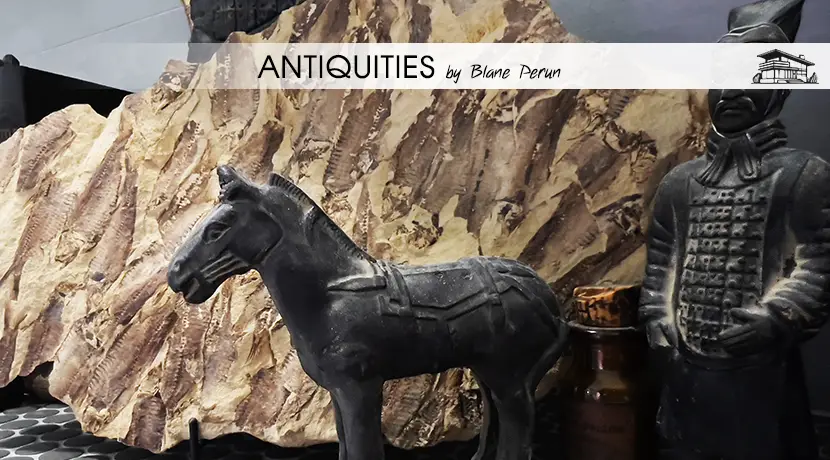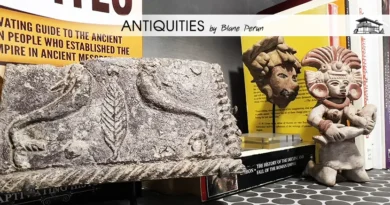Antiques vs Antiquities
Unveiling the Charm: Antiques vs Antiquities
When we dive into the captivating world of Antiques vs Antiquities, we’re not just talking about old stuff. We’re venturing into a realm where each piece holds a story, a fragment of time crystallized in physical form. These aren’t mere objects; they’re time capsules, each with a unique narrative and historical significance. The distinction between antiques and antiquities might seem subtle at first glance, but it’s this nuanced understanding that separates the casual observer from the avid collector or the curious mind seeking to unearth the past’s secrets.

The Essence of Time: Age and Authenticity
The Age Factor in Antiques
In the world of cherished collectibles, the age of an item plays a pivotal role in defining its status as an antique. Generally, for an object to be considered an antique, it needs to be at least 100 years old. This century mark isn’t arbitrary; it signifies a bridge to a bygone era, offering a tangible connection to the past. Antiques encompass a wide range of items, from furniture and paintings to jewelry and books, each echoing the aesthetic and craftsmanship of its time.
Antiquities: Echoes of Ancient Civilizations
Antiquities, on the other hand, take us even further back in time, often associated with ancient civilizations like the Egyptians, Greeks, Romans, and Mesopotamians. These items, such as pottery, coins, tools, and sculptures, are not just old; they are ancient, often thousands of years old. They hold immense archaeological value, providing insights into the daily lives, beliefs, and artistic expressions of ancient peoples. The allure of antiquities lies not just in their age but in their ability to connect us directly with the dawn of civilization and human history.
The Cultural Tapestry: Provenance and Purpose
Provenance in the Antique World
Provenance, or the history of ownership, adds layers of intrigue and value to antiques. Knowing who owned an item, where it originated, and its journey through time can significantly enhance its appeal and worth. This history can also authenticate an antique, distinguishing genuine pieces from replicas or forgeries. Collectors often relish the stories associated with their antiques, with provenance serving as a testament to the item’s authenticity and historical significance.
The Historical Significance of Antiquities
Antiquities are not merely old artifacts; they are relics of human history, each with a story that contributes to our understanding of ancient cultures. The historical significance of these items is immeasurable, offering insights into the technological advancements, artistic movements, and societal structures of ancient civilizations. For historians, archaeologists, and collectors alike, antiquities are invaluable resources that shed light on the mysteries of the human past, providing a tangible link to our ancestors and their way of life.
The Legal Landscape: Ownership and Acquisition
Navigating the Antique Market
The market for antiques is vast and varied, with items available through auctions, estate sales, antique shops, and online platforms. However, navigating this market requires caution and due diligence, especially concerning the authenticity and legal ownership of items. Laws and regulations governing the sale and ownership of antiques can vary by country, emphasizing the importance of provenance and documentation in ensuring that items are acquired legally and ethically.
The Ethical Acquisition of Antiquities
The trade in antiquities is subject to stringent regulations due to concerns about looting, illegal excavation, and the illicit trafficking of cultural property. International conventions and national laws aim to protect ancient artifacts and ensure their ethical acquisition. Collectors and institutions must exercise due diligence, ensuring that the antiquities they acquire have been legally obtained and properly documented, respecting the cultural heritage and historical significance of these ancient treasures.
In the mesmerizing dance of time, antiques and antiquities offer us a chance to hold a piece of history in our hands. They remind us of the intricate tapestry of human civilization, woven with threads of artistry, innovation, and cultural identity. As we cherish these treasures, we also bear the responsibility of preserving their stories and significance for future generations, ensuring that the echoes of the past continue to inspire and inform the future.

FAQs on Antiques vs Antiquities
What defines an item as an antique versus an antiquity?
An antique is typically defined as an item that is at least 100 years old, reflecting the craftsmanship and aesthetic of a bygone era. In contrast, antiquities are ancient artifacts, often thousands of years old, associated with ancient civilizations. Their value lies not only in their age but in their ability to provide insights into the early stages of human history and culture.
How does the provenance of an item affect its value in the world of antiques and antiquities?
Provenance, or the history of an item’s ownership and origin, plays a crucial role in determining its value and authenticity. In the realm of antiques, a well-documented provenance can significantly enhance an item’s appeal, connecting it to historical figures, notable events, or particular periods, thereby increasing its monetary and historical value. For antiquities, provenance is not just about value; it’s also about legality and ethics. A clear provenance helps ensure that the item was acquired legally, respecting the cultural heritage laws and preventing the trade of illicitly obtained artifacts.
Why is age important in distinguishing antiques from antiquities?
Age serves as a critical demarcation line between antiques and antiquities primarily due to the historical and cultural contexts they represent. Antiques, being at least 100 years old, offer a glimpse into relatively recent historical periods, showcasing the evolution of craftsmanship, art, and daily life. Antiquities, with their roots reaching back thousands of years, connect us to the ancient civilizations that laid the foundations of modern society. The age of these items not only reflects their rarity and preservation challenges but also their direct ties to significant epochs in human history.
Can modern technology help authenticate antiques and antiquities?
Absolutely, modern technology plays a pivotal role in the authentication of both antiques and antiquities. Techniques such as radiocarbon dating, thermoluminescence, and spectroscopy can help determine the age and origin of materials, providing scientific evidence to support the authenticity of these items. Digital provenance and blockchain technology are also emerging as tools to track the history and ownership of these pieces securely, adding an additional layer of verification and trust for collectors and historians.
What are the ethical considerations when collecting antiquities?
Ethical considerations are paramount in the collection of antiquities due to their significant cultural and historical importance. Collectors and institutions must ensure that the items were legally excavated and sold, with a clear provenance that respects the source country’s cultural heritage laws. There’s a growing emphasis on ethical collecting, which involves avoiding items that might have been looted or illegally exported, thus supporting efforts to preserve global heritage and prevent the financing of conflicts through the illicit trade of antiquities.





